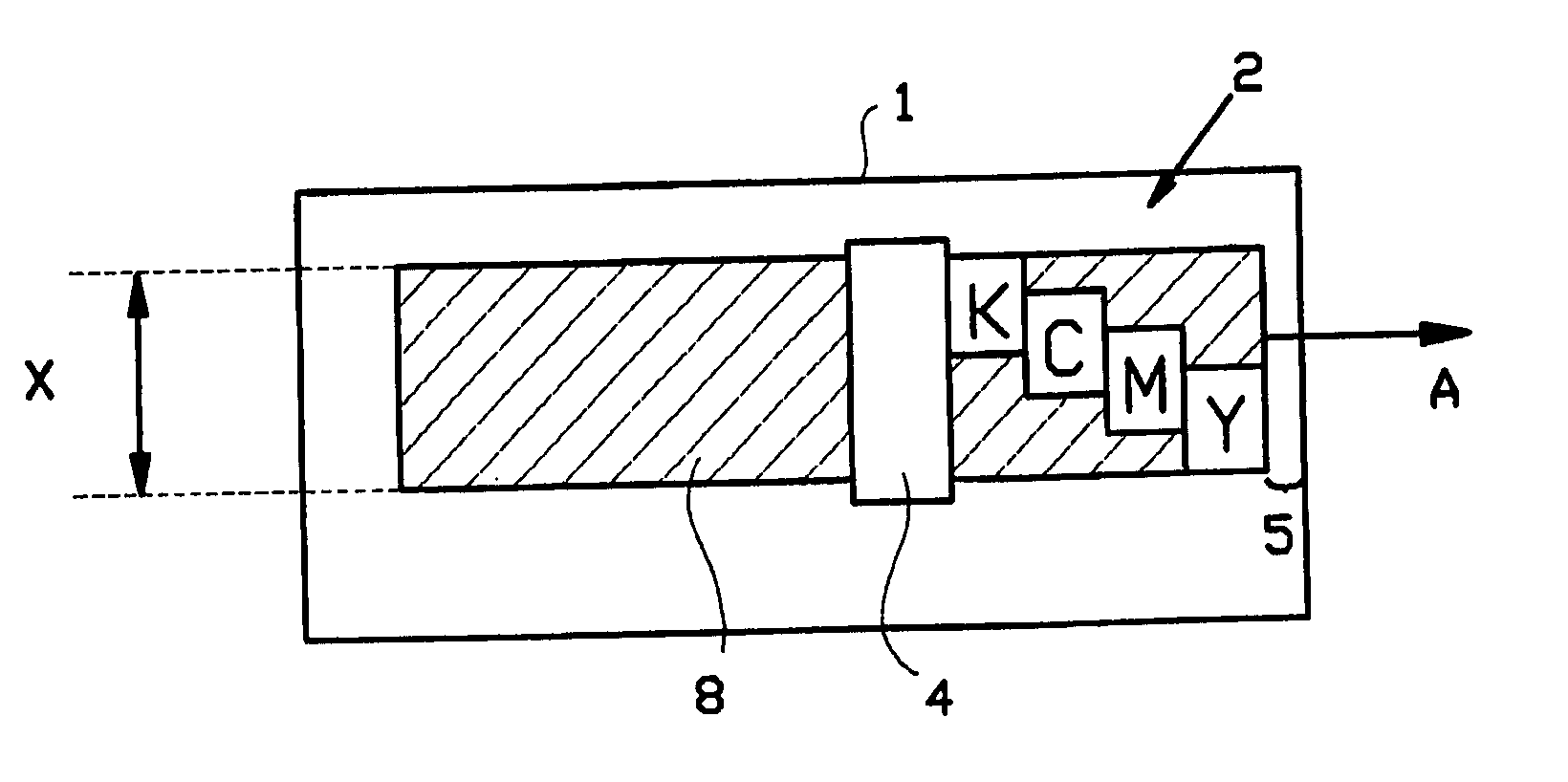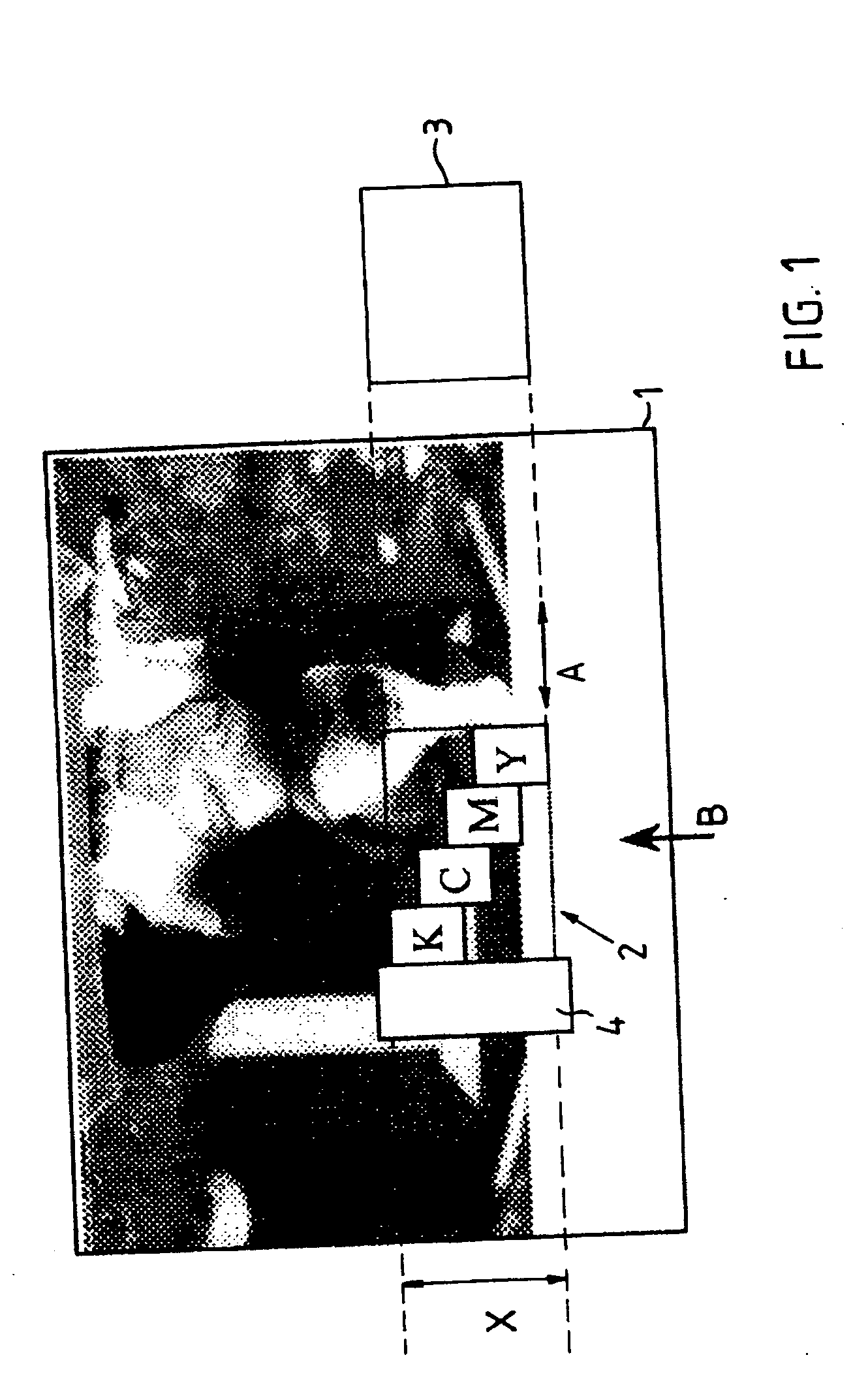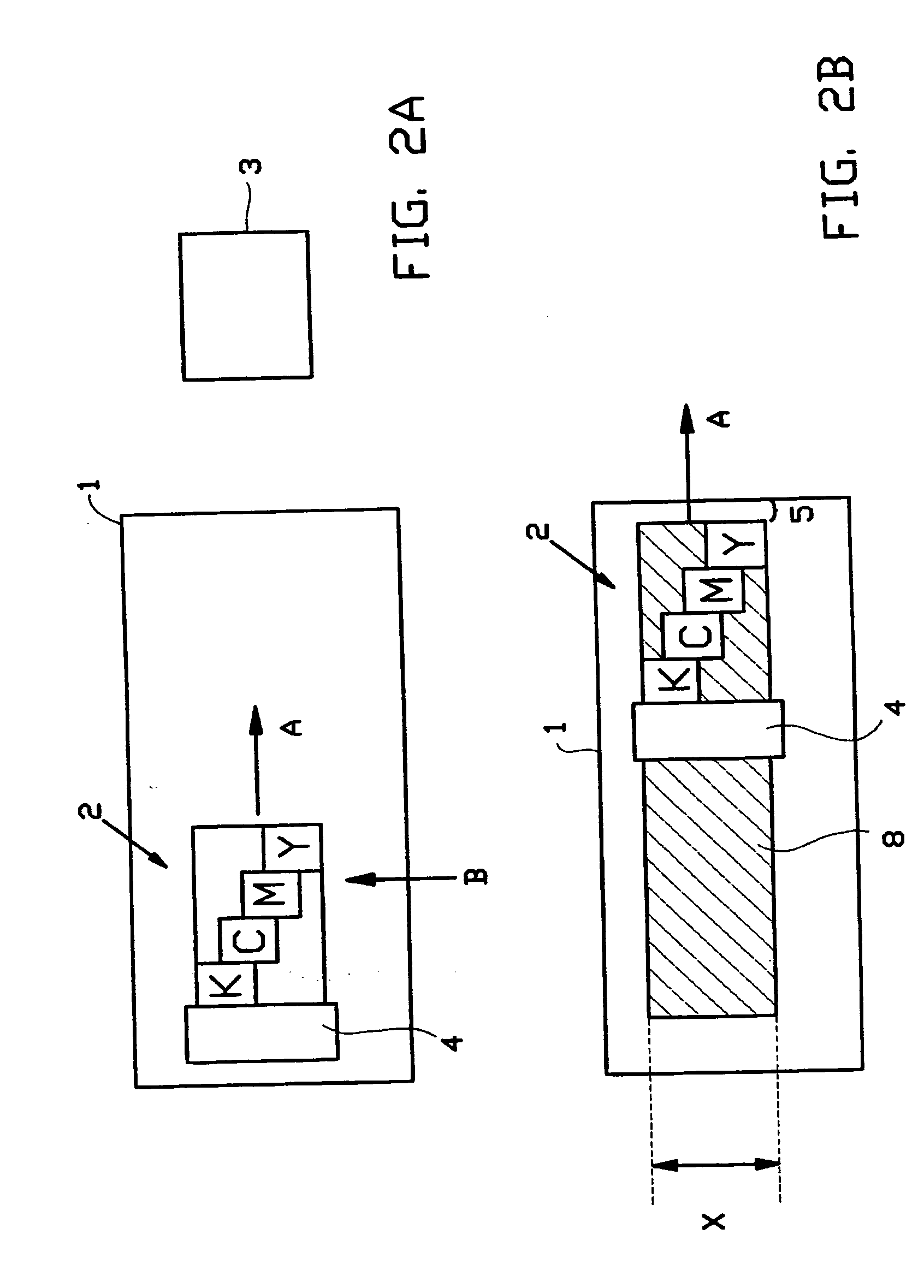Method and printer for applying an ink image to a receiving material
a technology for receiving materials and printers, applied in printing, instruments, printing, etc., can solve the problems of introducing positioning errors, requiring calibration steps, and introducing positioning errors, so as to improve accuracy, increase contrast, and facilitate and more accurate detection
- Summary
- Abstract
- Description
- Claims
- Application Information
AI Technical Summary
Benefits of technology
Problems solved by technology
Method used
Image
Examples
Embodiment Construction
[0063] A simplified printer situation is presented in FIG. 1. FIG. 1 shows a top view of a receiving material 1 (in this case paper) onto which an ink image is printed. For printing the ink image, the printer utilizes a carriage 2 which is movable along a carriage scan-axis A for applying the ink image to the paper 1. The paper 1 is stepwise advanced in the direction of advance B, which extends in the direction substantially orthogonal to the carriage scan-axis A. During the printing of an image the carriage 2 is driven back and forth along the scan-axis A to print the successive swaths with the print head. When not in use the print head is stored in a capping station 3 which is situated at one end of the scan path of the carriage 2. The carriage 2 is provided with a print head comprising four printing devices Y, M, C and K which are displaced with respect to each other in the direction of advance B. The first printing device that prints on a strip of paper is the printing device Y ...
PUM
 Login to View More
Login to View More Abstract
Description
Claims
Application Information
 Login to View More
Login to View More - R&D
- Intellectual Property
- Life Sciences
- Materials
- Tech Scout
- Unparalleled Data Quality
- Higher Quality Content
- 60% Fewer Hallucinations
Browse by: Latest US Patents, China's latest patents, Technical Efficacy Thesaurus, Application Domain, Technology Topic, Popular Technical Reports.
© 2025 PatSnap. All rights reserved.Legal|Privacy policy|Modern Slavery Act Transparency Statement|Sitemap|About US| Contact US: help@patsnap.com



